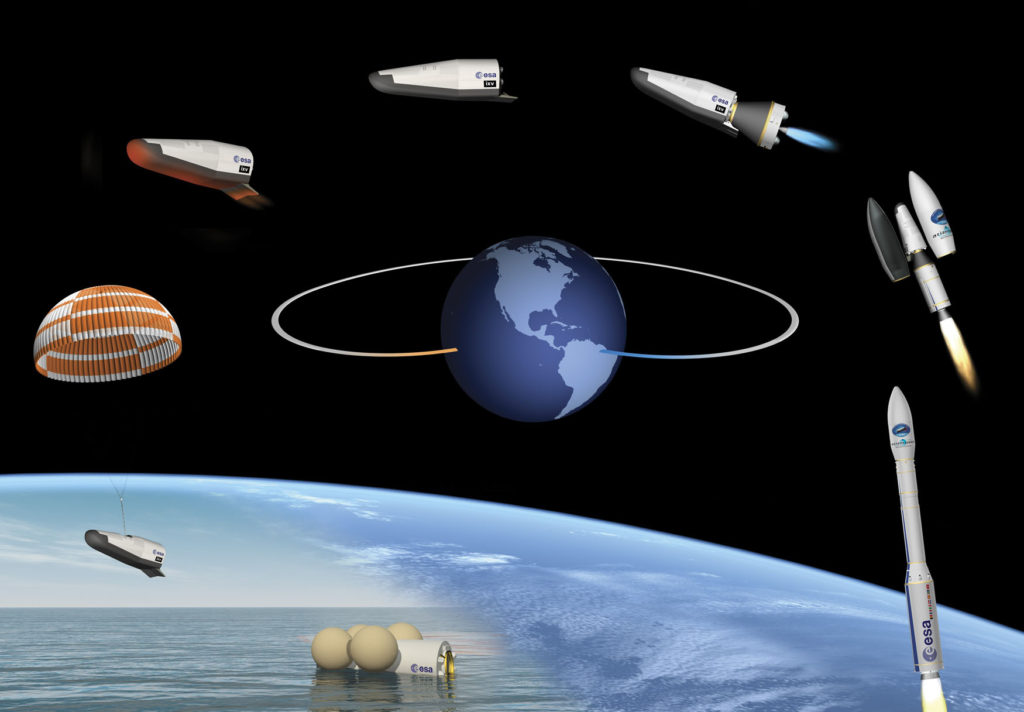February 10, 2015 7:53 pm
Autonomous Space Planes and Uncrewed Rockets

Artist’s view of the IXV mission. Credit/Copyright: ESA–J. Huart, 2014.
Never send a human to do a robot’s job. At least, not this week.
Wednesday, the ESA will test their IXV (Intermediate eXperimental Vehicle), an autonomous space plane designed to leave Earth atop a Vega booster rocket, then conduct uncrewed missions in low Earth orbit including “space transportation, robotic servicing of space infrastructure and exploration.”
The IXV is actually just an intermediate step in the development of a functional autonomous European space plane. The next step, elements of which are being tested now on the IXV, will be ESA’s PRIDE (Program for Reusable In-orbit Demonstrator in Europe), a larger vehicle that would still use the Vega as its launch rocket.
It’s also been a big day for uncrewed vehicles. Earlier today, the SpaceX Dragon undocked from the ISS and returned to Earth after multiple autonomous orbital maneuvers, splashing down a few minutes ago (7:46 pm ET) without incident in the Pacific off the coast of California.
SpaceX had also been scheduled to finally launch their Falcon 9 rocket carrying NASA’s DSCOVR satellite, followed by a reusability/landing test of the Falcon’s first stage booster rocket. Unfortunately, once again weather forced another flight cancellation until tomorrow, Wednesday, at 6:03 pm ET.
When weather finally does cooperate, after the first stage of the Falcon 9 has done its job and separated from the rest of the rocket, it will be directed through a controlled descent to land on a platform on an autonomous drone ship floating in the Atlantic. An earlier test on January 10 had failed due to insufficient hydraulic fluid necessary for controlling the stabilizing fins.
It’s getting easier to imagine a time in the not-too-distant future when uncrewed rockets of all kinds will be handling the drudgework in low-earth-orbit, while uncrewed spacecraft are exploring the asteroids, outer planets, dwarf planets and moons of our solar system.
And if that has you worried about a lack of job opportunities for astronauts, you have no further to look than Orion and the SLS… and Mars.
That’s it for now. Keep Looking Up!
–Jeffrey Simons
Get the most out of StarTalk!
Ad-Free Audio Downloads
Priority Cosmic Queries
Patreon Exclusive AMAs
Signed Books from Neil
Live Streams with Neil
Learn the Meaning of Life
...and much more

 Become a Patron
Become a Patron

